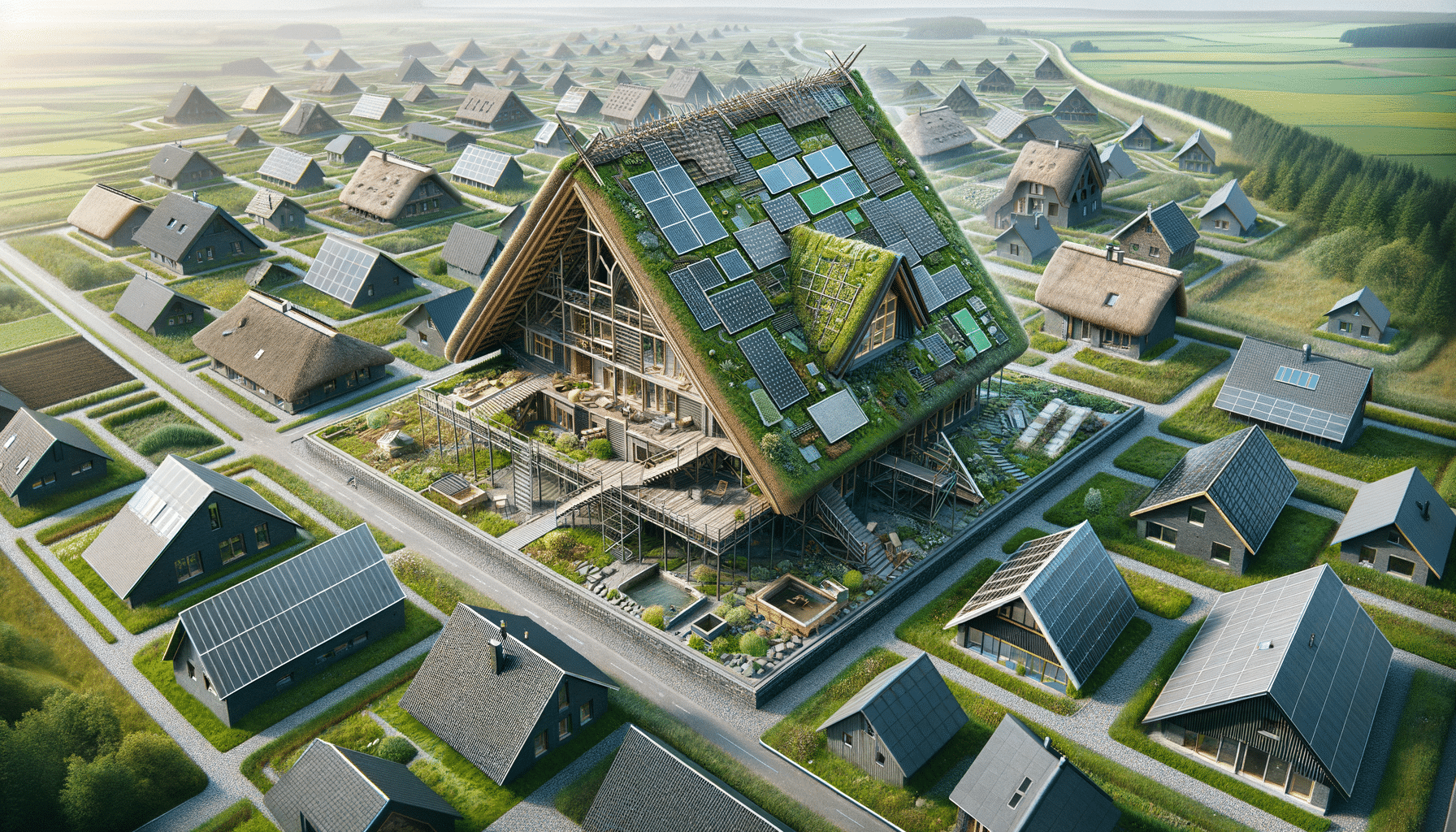
Exploring Unique Roof Designs by Roofing Companies
Introduction to Roofing Services
Roofing services are a crucial element in the construction and maintenance of buildings, providing not only protection from the elements but also contributing to the aesthetic appeal and energy efficiency of a structure. From residential homes to commercial buildings, the demand for innovative and durable roofing solutions has led to the emergence of unique roof designs that cater to various needs and preferences. In this article, we delve into the world of roofing services, exploring the diverse designs offered by roofing companies and the impact they have on modern architecture.
The Evolution of Roof Designs
The evolution of roof designs reflects the changing needs and tastes of society. Traditionally, roofs were designed primarily for functionality, focusing on protecting buildings from weather conditions. However, modern roof designs have expanded to include aesthetic elements, energy efficiency, and sustainability. Roofing companies have embraced these trends, offering a range of styles that include flat, pitched, and curved roofs, each with its unique advantages.
Flat roofs, for example, are popular in urban areas where space is limited. They provide additional living space, often used for rooftop gardens or terraces. Pitched roofs, on the other hand, are known for their ability to efficiently manage water runoff and are ideal for regions with heavy rainfall. Curved roofs, while less common, offer a visually striking appearance and can be designed to enhance natural light within a building.
These innovative designs not only improve the functionality of a building but also contribute to its overall aesthetic appeal, making roofing services a vital component of architectural design.
Materials Used in Modern Roofing
The choice of materials in roofing is as diverse as the designs themselves, with each material offering distinct benefits. Traditional materials such as asphalt shingles and clay tiles remain popular due to their durability and cost-effectiveness. However, modern roofing services have expanded to include materials like metal, slate, and even green roofs.
Metal roofs are renowned for their longevity and resistance to extreme weather conditions. They are also highly reflective, contributing to energy efficiency by reducing cooling costs in warmer climates. Slate roofs, though more expensive, offer exceptional durability and a classic aesthetic that enhances the value of a property.
Green roofs, which involve the installation of vegetation on rooftops, are gaining traction for their environmental benefits. They improve air quality, provide insulation, and reduce stormwater runoff, making them an excellent choice for eco-conscious homeowners and businesses.
By selecting the right materials, roofing companies can create roofs that not only meet the functional needs of a building but also align with the environmental and aesthetic goals of their clients.
Innovative Roofing Technologies
Technological advancements have significantly impacted the roofing industry, leading to the development of innovative solutions that enhance both performance and sustainability. One such advancement is the integration of solar panels into roofing systems. Solar roofs are designed to harness solar energy, providing a renewable source of power for homes and businesses. This technology not only reduces energy costs but also contributes to environmental conservation.
Another innovation is the use of cool roofs, which are designed to reflect more sunlight and absorb less heat compared to traditional roofs. This technology helps in reducing the urban heat island effect and lowers energy consumption for air conditioning, particularly in hot climates.
Additionally, roofing companies are exploring the use of drones for roof inspections, allowing for safer and more efficient assessments of roof conditions. This technology enables precise measurements and detailed inspections without the need for manual access, reducing risks and costs associated with traditional inspection methods.
These technological innovations are transforming the roofing industry, offering solutions that are not only efficient and cost-effective but also aligned with the growing demand for sustainable building practices.
Choosing the Right Roofing Company
Selecting the right roofing company is a critical decision that can impact the quality and longevity of your roof. When choosing a roofing service provider, consider the following factors:
- Experience and Expertise: Look for companies with a proven track record and expertise in various roof designs and materials.
- Reputation: Check reviews and testimonials from previous clients to gauge the company’s reliability and quality of service.
- Licensing and Insurance: Ensure the company is licensed and insured to protect against potential liabilities and ensure compliance with local regulations.
- Warranty and After-Sales Service: A reputable company should offer warranties on their work and provide after-sales service to address any issues that may arise.
By carefully evaluating these factors, you can choose a roofing company that will deliver exceptional quality and service, ensuring the longevity and performance of your roof.
Conclusion
In conclusion, roofing services play a vital role in the construction and maintenance of buildings, offering a range of designs and materials that cater to diverse needs and preferences. The integration of innovative technologies and sustainable practices has transformed the industry, providing solutions that enhance both functionality and aesthetic appeal. By understanding the various aspects of roofing services and choosing the right provider, homeowners and businesses can ensure their roofs are not only durable and efficient but also a reflection of their style and values.
